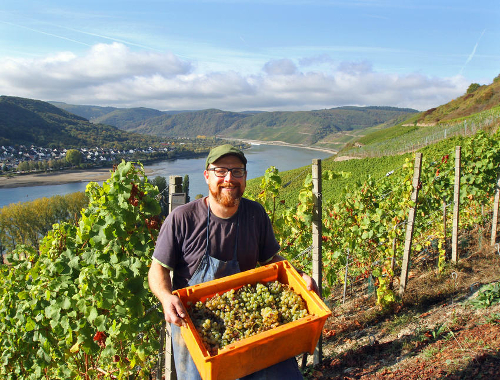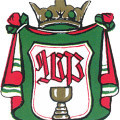Our Vineyards

Viticulture has a longstanding tradition in our region, easily spanning over more than a thousand years. Findings prove that the Romans, who were based in Boppard in a large fort that is still well preserved today, already practised viticulture. Winegrowing in Boppard was first mentioned in 643 AD in a document detailing the transfer of a vineyard. Subsequently, numerous emperors, kings, princes and monasteries owned vineyards in the “Bopparder Hamm”, as they too were convinced of the quality of Boppard’s wines.
Our high-quality wines are the result of the harmonious interplay between natural conditions (soils, microclimate, hours of sunshine, etc.) and the competent work of our family in both the vineyards and in the cellar.
We are in the fortunate position of being able to cultivate our vineyards in the “Bopparder Hamm” on the largest loop of the Middle Rhine. Given its length of six kilometres, the “Bopparder Hamm” is the largest contiguous vineyard region on the Middle Rhine and nature is particularly kind to us winegrowers here: For several kilometres, the Rhine does not continue to flow straight north at this point, but rather across from west to east, and our vineyards thus receive particularly many valuable hours of sunshine.
In the “Bopparder Hamm”, our vines grow on weathered slate soils with pumice inclusions. The Mediterranean microclimate, favoured by the waters of the Rhine, the great arc of the Rhine and the steep vineyards in pure southern exposure with an ideal angle of incidence for the sunlight, allows sun-drenched, outstanding, fruity wines to thrive.
Our vineyards are planted with:
75 % Riesling, the “queen” of white wine grape varieties,
15% Burgundy varieties, Pinot Blanc (Weißburgunder) and Pinot Noir (Spätburgunder).
10 % Chardonnay, Kerner, Scheurebe, Gewürztraminer, Dornfelder and Rivaner.
Through the use of pesticides that are gentle on beneficial insects, regular soil tests and environmentally friendly weed control, the “Bopparder Hamm” has become a habitat for many animals and plants threatened with extinction. Hawks, brown hares, emerald lizards, Apollo butterflies and some rare insect species have found a home here. Some plants, such as the Iberis Boppardensis (a local variety of candytuft), are endemic and cannot be found anywhere else in the world.
We make our contribution by practising environmentally friendly viticulture. Since the beginning of the 1990s, in the days of our father Walter Perll senior, we have been working successfully with pheromones, i.e. special sexual attractants that render any pests (vine moths) harmless, so that we can happily do without using insecticides.
